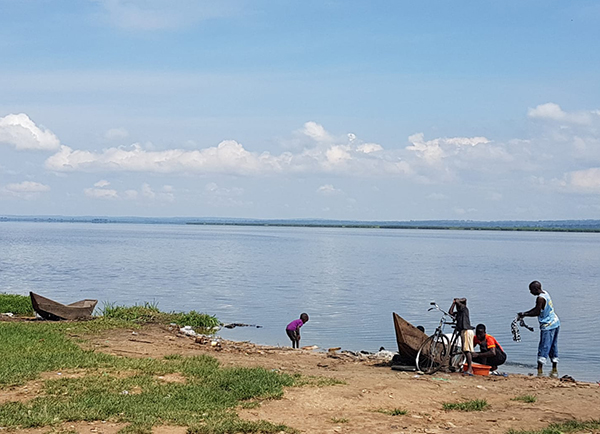UGANDA, AFRICA
Lake Wamala
Lake Wamala is one of the several freshwater bodies located in Central Uganda, covering a total area of 250 km². The lake is rather shallow with a depth ranging from 1,5 m to 4,5 m. Papyrus beds, reed, Raphia palms and wild date palms surround the entire lakeshore.
What makes it special
More than 4.000 years ago, Lake Wamala was a part of Lake Victoria, but has since receded into its current state.

Biodiversity
Papyrus, other floaters, and water-based vegetation dominate the vegetation surrounding Lake Wamala. There are also trees such as Raphia and other palms. A variety of animal species such as Sitatunga, Wild pigs, Hippopotamus, Bushbuck, Waterbuck, Vervet Monkey, Baboon, Guinea Fowl, and Turaco live near the lake. Existing fish species include Tilapia, Catfish, and Lungfish.

Local Communities
Lake Wamala is of significant economic and cultural interest locally and is jointly administered by the districts of Mubende, Mityana, and Mpigi, each of which share a part of the lake along common borders. The lake is of traditional and cultural significance to the people of Buganda in Central Uganda.
Threats
Lake Wamala is under high pressure due to the increasing human population. People converted natural habitats in the basin for agricultural land. The basin holds extensive forested areas but these are subject to ongoing and major deforestation, which is leading to erosion and increased siltation in the lake and inflowing rivers. Water quality is also deteriorating because of pollution originating within the basin, for example, domestic waste litters the lake as communities use it as a rubbish pit, and poor agricultural practices result in chemicals entering the rivers and lake.


